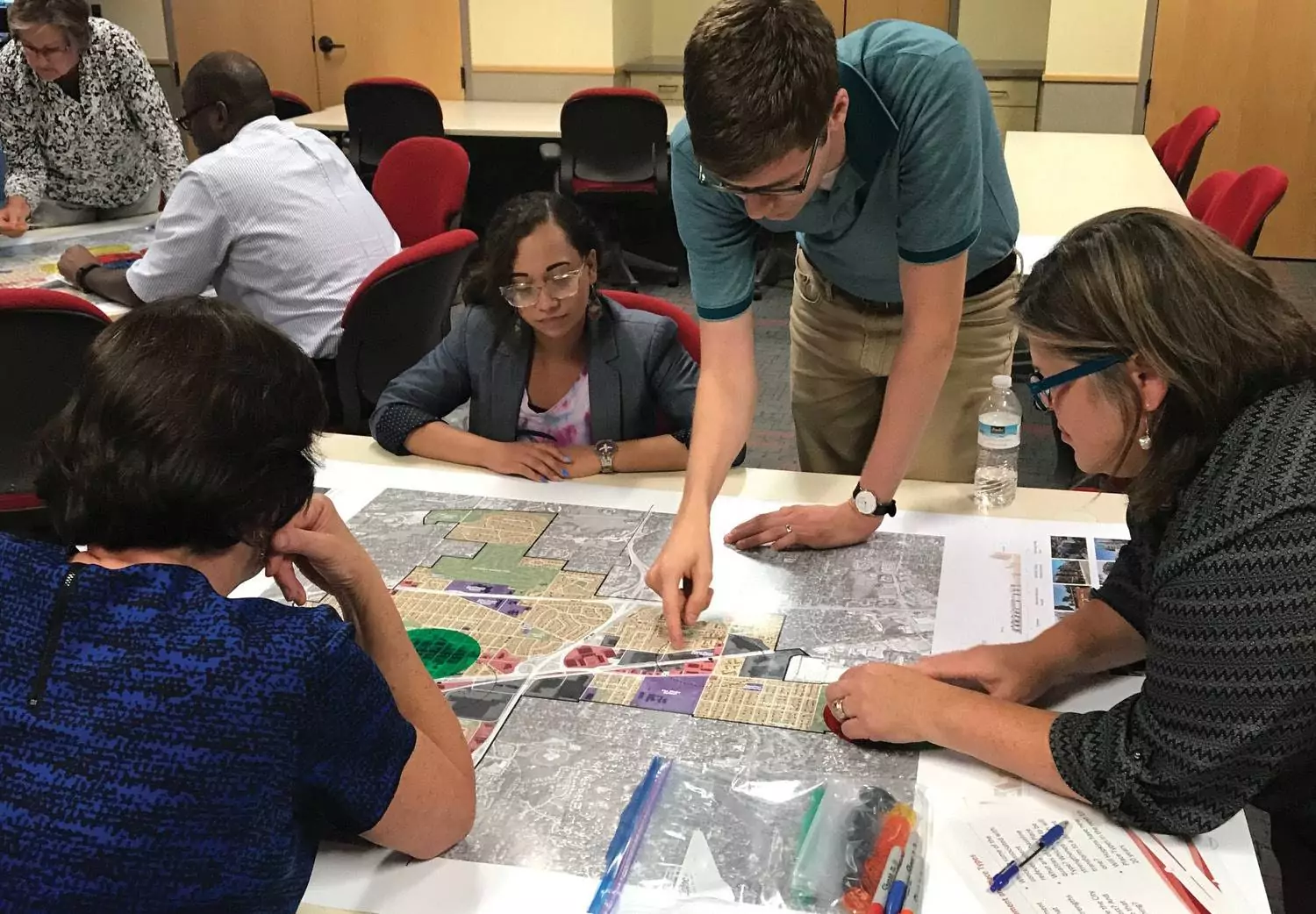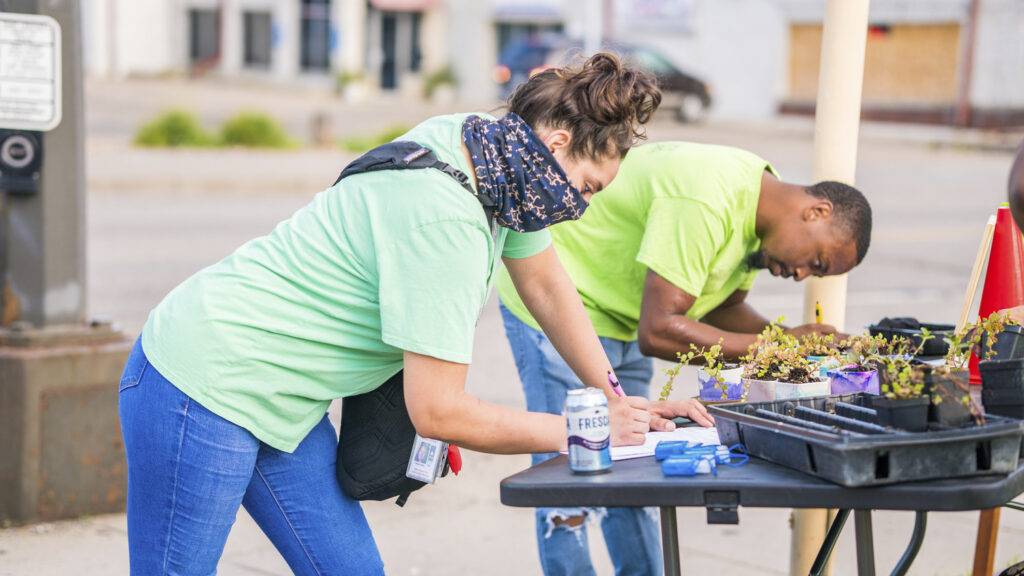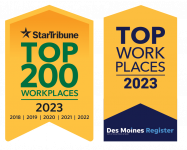
Building the Equity Table in Community Infrastructure
Equity is a word that is increasingly coming to the forefront in many organizations – in mission statements, websites, presentations, or trainings. But what does it really mean, and how does equity play a role in community infrastructure?
If you’re looking for a simple definition of equity, it means, “fairness or justice in the way people are treated.” Equity is a deep and complex topic that requires real commitment to put ideas into practice. This also holds true when it comes to decisions on how jurisdictions plan, build, and maintain public infrastructure and services. There is no “one size fits all” solution for a commitment to equity in infrastructure. Rather, it’s making sure that each jurisdiction works consistently to ensure fair infrastructure access and support for the entire community. It’s looking to leaders to make decisions advancing the needs of underrepresented community members, listening and engaging with the community, and planning a project with equity in mind throughout the entire process.
Scoping the equity table
When it comes to making an impact on equity in your community, it is important to have a clear picture of underrepresented individuals living and working in an area. But as important as that is, community leaders may need to start the process even earlier to ensure project size, scope, and timing is considered to fully understand and address all the implications on the community. This means spending time to proactively address issues related to equity, both in process and product.
If a project is not scaled correctly, people may be excluded from consideration and outreach. Proper scoping and budgeting allow for a thoughtful and inclusive process to provide adequate time for outreach and engagement. If you define the project area so that the impacts on surrounding areas and people are considered during the process, you can be more successful in the long run, achieving equity goals in future projects with this baseline work done.
Making space at the table
Every community ‘table’ looks different when it comes to the individuals who live there. Once a project has been scoped, take time to understand the diversity of groups that make up a community. Leaders should be looking at who’s at the table (and who’s not) and figuring out what groups are in their area – whether that’s people with disabilities, non-English speakers, low-income residents, people of diverse racial or ethnic backgrounds, or other underrepresented populations.
Once data has been collected, use that research to intentionally engage with those underrepresented groups about infrastructure projects. Use resources, partners, and assets that can assist in engaging disadvantaged groups in a way that is authentic and builds trust. Well-connected groups have the resources to engage with community leaders, but there might be barriers in place for disadvantaged groups for participation and engagement.
By reviewing, selecting, and implementing engagement tools that are focused on those underrepresented groups, and addressing identified barriers where applicable, you can connect with people where they are, and be culturally appropriate and respectful. Changes in infrastructure are most effective when the people who rely on it are involved in its planning.

Leveling the table
When we think about our community projects and funds, who are the members that are benefiting from those projects, and where do impacts occur? Community leaders should have a clear understanding of the people, issues, and concerns present in the community, with a focus on how the project can further a more equitable distribution of benefits and mitigation of impacts. Determine your community needs, particularly related to better serving disadvantaged groups with project outcomes and how project design can support other goals like business development, livability, and public safety. Conventional project planning and design may not consider the needs, desires, and results of disadvantaged groups, who may disproportionately be unable to access its benefits.
Food (and money) on the table
Through how the project is funded, bid, and constructed, resources should be intentionally directed toward benefitting disadvantaged groups. Conventional project funding, bidding, and construction typically favor established firms and workforce. Consider funding sources that provide resources to go over and above in terms of approaches to advance equity in your community, not just lowest bid. Pursue alternatives such as best-value procurement that allow for consideration of other factors besides price as a major consideration in selection.
Equity in infrastructure requires us all to approach projects differently, and more thoughtfully. As processes are developed and implemented, this commitment and application will become an inherent investment. When a community has a real focus on equity in infrastructure, everyone not only has a seat at the table, but has a seat that fits their needs.
As published in CityScape.
Haila Maze, AICP, is a principal planner at Bolton & Menk, who is committed to providing excellent project management, creative community engagement strategies, health impact assessments, land use and transportation modeling, community development lending, and environmental reviews to contribute to the long-term success of our client communities. She draws on her experience with local and regional planning projects to connect with clients and help them identify what they need and how to accomplish it.
Rose Schroder, AICP, is a senior urban planner at Bolton & Menk who excels in municipal planning, metropolitan area comprehensive plan development, and land use analysis and impacts. She serves as the advocacy and outreach coordinator for the American Planning Association – Iowa Chapter Board. Rose believes that quality of life is directly related to the quality of place. The built environment, as well as the services and opportunities available to all residents, businesses, and visitors, impacts the vitality of a community.
